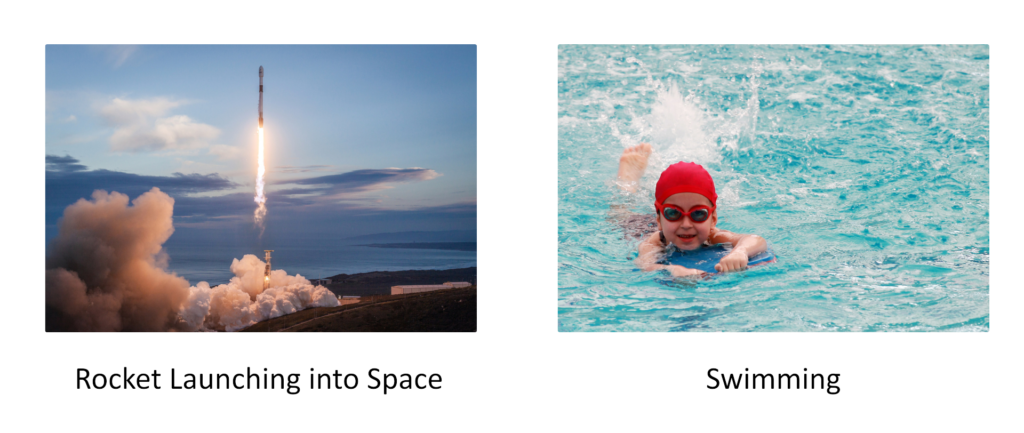Newton's Third Law – GCSE Physics
Introduction
- Newton’s Third Law of Motion states that, for every action, there is an equal and opposite reaction.
- It explains the fundamental interactions between objects in the universe and help us to understand how forces work in pairs.
Example:


What is Newton’s Third Law of Motion?
- It states that, when two objects interact, the forces they exert on each other are Equal and Opposite.
- Equal refers to the magnitudes of two forces whereas Opposite refers to their direction.
Real-life Examples:
Running:
- Action: Our foot pushes backward against the ground.
- Reaction: The ground pushes us forward with an equal force, making us move.

Bird Flying:
- Action: A bird’s wings push air downward.
- Reaction: The air pushes the bird upward, allowing flight.

What are the Balanced Forces and Action-Reaction Pairs?
Balanced Forces
- These are two or more forces that act on the same object, are equal in size, and opposite in direction, so they cancel each other out.
- No change in Motion or constant Speed (if already moving).
Examples:

Action-Reaction Pairs:
- These are two forces that act on the different objects, are equal in size, and direction, so they do not cancel each other out.
- Cause Motion and Accelerates.
Examples:

What is Collison?
- Collison is an example of a Newtons 3rd law of Motion which states that when two objects collide, both objects exert equal and opposite forces on each other.
- Newtons 3rd Law Applies to Collisions based on:
- Force Pairs During Impact
- Momentum Conservation
- Different Effects Based on Mass
Examples:

Click the links below to learn more about Newton’s Laws of Motion:
Frequently Asked Questions
Solution:
It means that whenever one object pushes or pulls another, the second object pushes or pulls back with the same force in the opposite direction.
Solution:
No. Balanced forces act on the same object. Action reaction forces act on different objects.
Solution:
No, because they act on different objects, they do not cancel each other.
Solution:
When you jump off a small boat, you push back on the boat and the boat moves backward.
Solution:
Yes. According to Newtons 3rd law, forces always come in pairs — Action and Reaction.

